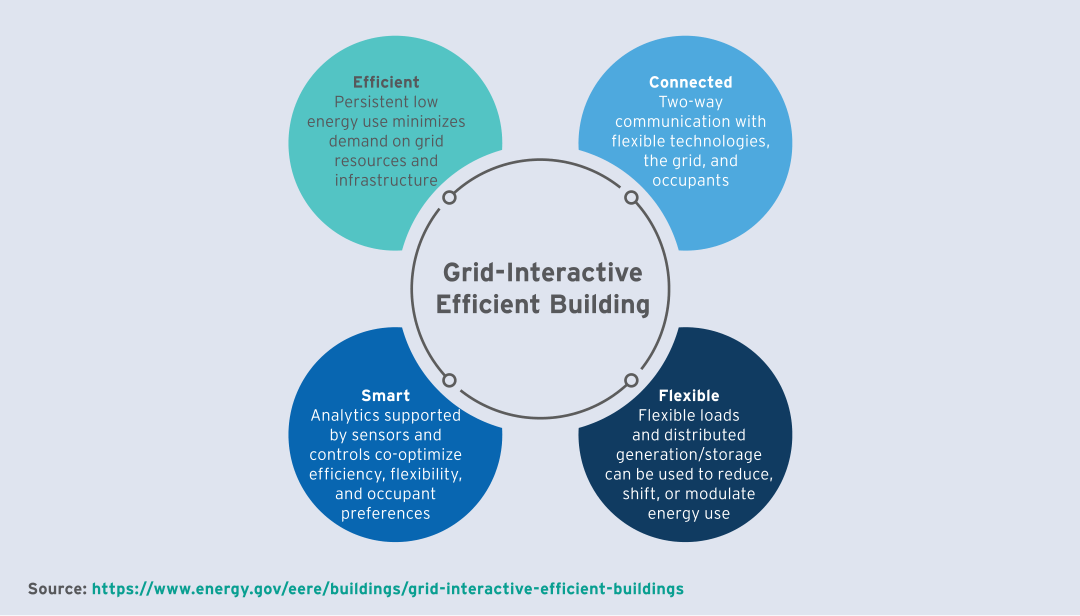
Report | 2021
Grid-Interactive Efficient Buildings Made Easy: A GSA Building Manager’s Guide to Low- and No-Cost GEB Measures
Buildings drive up to 80 percent of the peak demand on energy grids in the United States. As utilities incorporate more time-of-use pricing based on the cost or carbon intensity of the electricity being generated, grid interactivity has become more important and valuable than ever.
Grid-interactive efficient buildings (GEBs) are energy-efficient buildings that flex their energy load from one time to another based on the cost or carbon intensity of grid electricity. GEBs are constantly responding to minute changes to grid price and carbon intensity, resulting in more beneficial integration between buildings and the grid that can reduce utility costs and grid-related greenhouse gas emissions.

There are many no- and low-cost measures that building managers can take to increase load flexibility and grid interactivity in their buildings.
These include:
- Optimizing building operation to occupancy patterns
- Optimizing thermal mass to building operation
- Maximizing use of existing storage capacity
- Optimizing control system algorithms and sequence of operations
- Automate controlled lighting
This report provides an overview of grid-interactive efficient buildings and lays out actionable steps for GSA building managers to implement these no- and low-cost measures. This can save utilities money, reduce greenhouse gas emissions, and help increase the resilience of the building and the grid—all without compromising occupant needs.